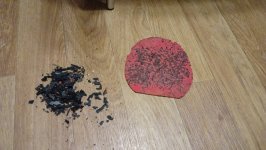This user has no status.
This user has no status.
Member
Not sure, just feel like the talcum powder breaks through the tackiness but doesnt loosen up the topsheets/pongewhy torture yourself ""for a few months"" as you say, when a tiny bit of talcum powder will make the rubber perfectly playable ??
Life is short !!!!










